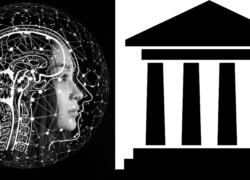Last month (September 25 and 26), I attended the Strata AI Conference in New York City. The Strata AI Conference continues to provide an informative and comprehensive overview of artificial intelligence and its accelerating transition from research to industrialization. Sessions covered a broad spectrum of AI topics, including cutting-edge research, open source tools, regulatory considerations, use cases and best practices for implementation.
Over 5,000 people attended the conference. There were over 125 exhibitors and about 170 breakout sessions covering all aspects of AI establishing the Strata conference as one of the unique gathering in the area of Cloud/AI/ML/DL
Considering the number of keynote speeches and breakout sessions, in the interest of space, we will highlight only few of the topics.
The road to an enterprise cloud
Mick Hollison (CMO, Cloudera) discussed the essential elements of enterprise cloud and how Cloudera and its strategic partner IBM are working together in assisting customers to build a true enterprise cloud. He stated that “No one that we work with does more to force the issue around hybrid and multicloud, and to really drive that message home, than our most strategic partner in the world, IBM”. He informed The IBM + Cloudera strategic partnership reinforces a combined commitment to open source and cloud for Analytics/AI initiatives. It offers clients an industry-leading, enterprise-grade Hadoop distribution plus an ecosystem of integrated products and services – all designed to help organizations industrialize Analytics/AI.
Reader’s may be interested in the latest Cabot Partners publication that describes the strengths of IBM and Cloudera alliance – Greater Choice and Value for Advanced Analytics and AI – https://www.cabotpartners.com/wp-content/uploads/2018/07/IBM-Cloudera-Alliance-September-2019.pdf .
AI Ladder
Highlights of an interesting discussion between Rob Thomas, General Manager, IBM Data and Watson AI and Tim O’Reilly, Chairman of O’Reilly Media.
AI Ladder: Breaking an AI strategy down into pieces – or rungs of a ladder serves as a guiding principle for organizations to transform their business by providing four key areas to consider: how they collect data, organize data, analyze data, and then ultimately infuse AI into the organization. By using the ladder to AI as a guiding framework, enterprises can build the foundation for a governed, efficient, agile, and future-proof approach to AI.
AI challenges: The challenges companies face can be categorized as follows:
- Lack of understanding – because of increasing popularity of AI, assume that it will fix any problem – which is not true
- Getting a handle on their data – good data is essential for a successful AI implementation. Organizations suffer from a combination of lack of data, too much data, and bad data.
- Lack of relevant skills – AI skills are rare and therefore high in demand and there is a shortage of skilled workers.
- Trust – as more applications make use of AI, businesses need visibility into the recommendations made by their AI applications. Traceability and explainability are very important
- Culture and business model change – is required to take advantage of the opportunity the new technology provides.
Concluding thoughts: Fear factor – managers who use AI will replace those who haven’t gotten through the hype phase of AI. Now is the time for AI.
Top blunders in Big Data
Michael Stonebraker, Computer scientist, winner of Turing award had an interesting take on top ten blunders of Big Data (in the interest of space – combined few of them). One need not agree with his list – however, they stimulate thinking and good discussion.
- Not planning for AI/ML
- Not solving your real data science problem – typical data scientist 90% of the time on data discovery and data cleaning,
- Belief that traditional data integration will be solved by data science
- Belief that data warehouses, data lakes and Hadoop/Spark will solve all your data science problems
- Succumbing to Innovator’s dilemma – got to reinvent yourself
- Not paying for few rocket scientists
- Outsourcing to an external service provider
- Not moving everything to cloud
Conclusion
AI is one of the greatest challenges and opportunities of our time. It will transform entire industries and the way enterprises operate. The pace of innovation continues to accelerate at a phenomenal pace. Events like the Strata AI Conference can provide analytics leaders with valuable insights and an understanding of the future.








